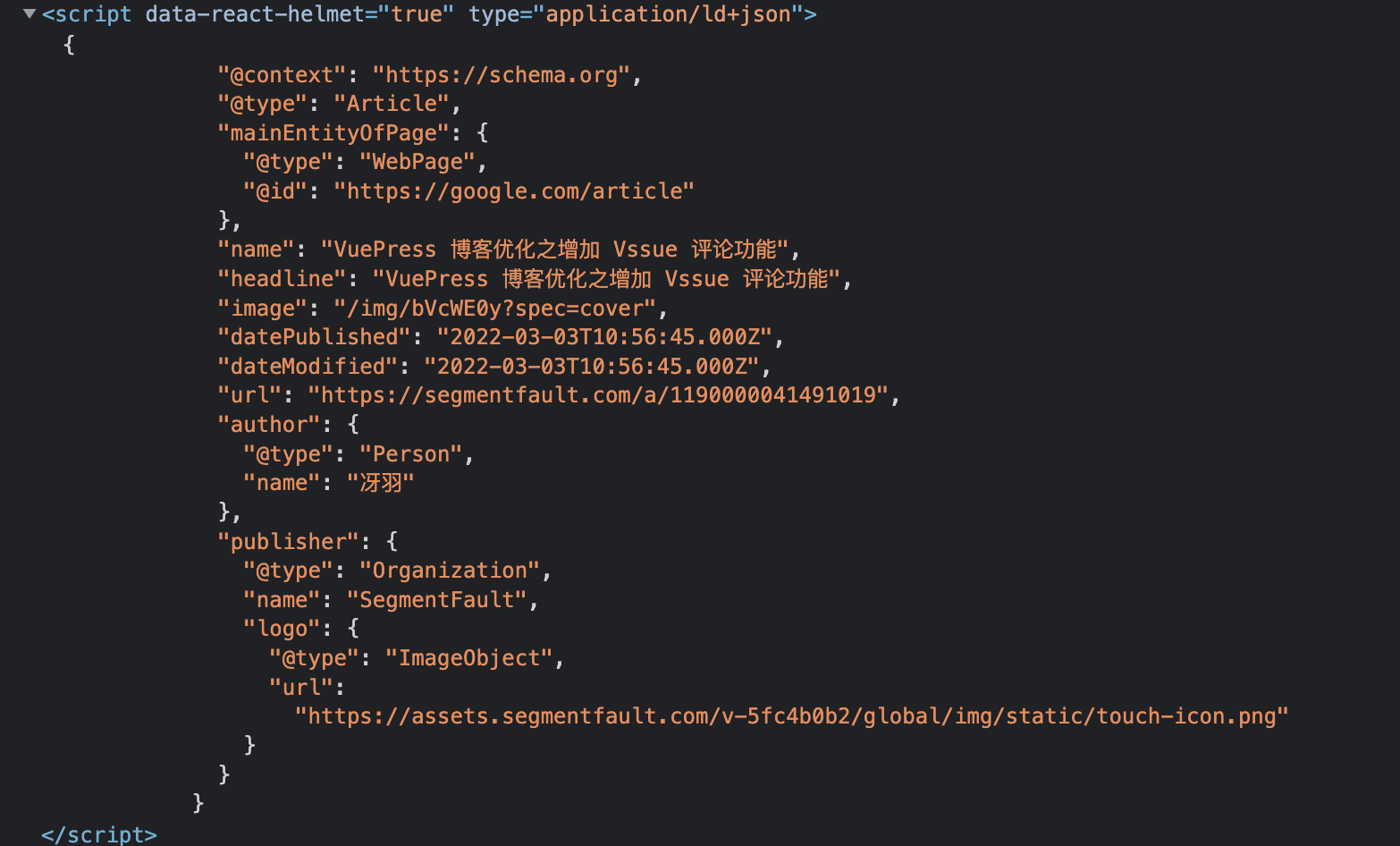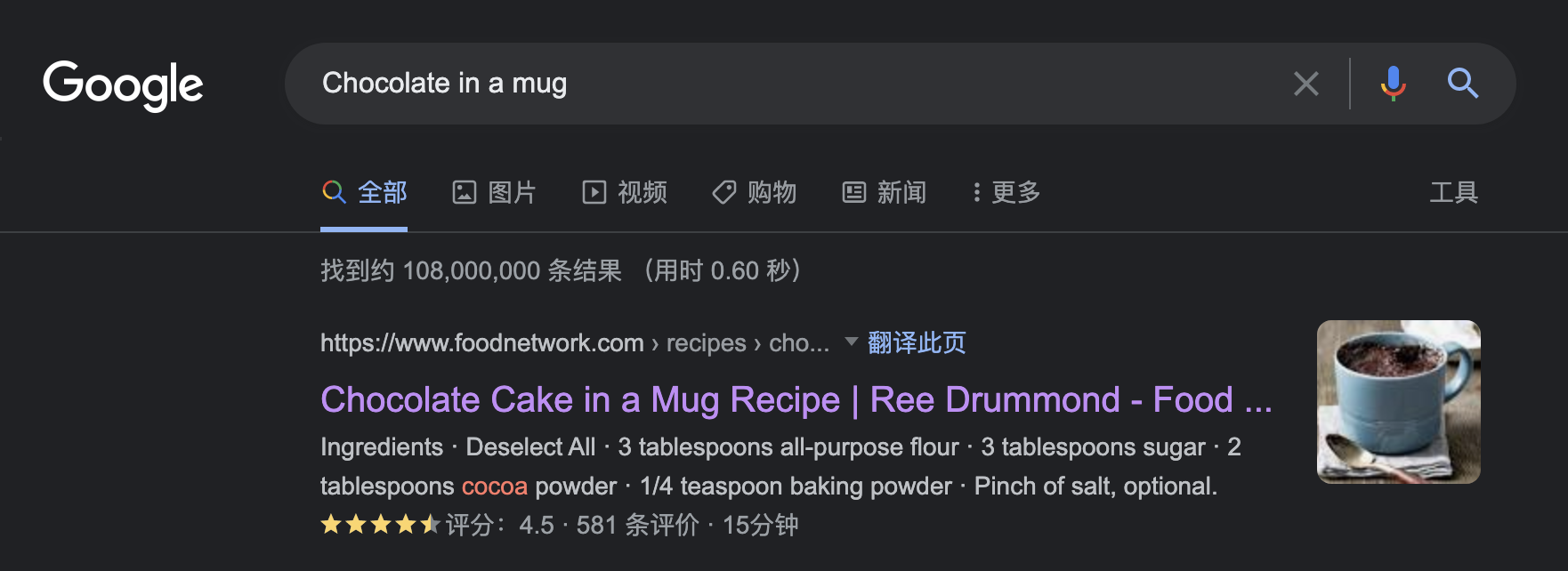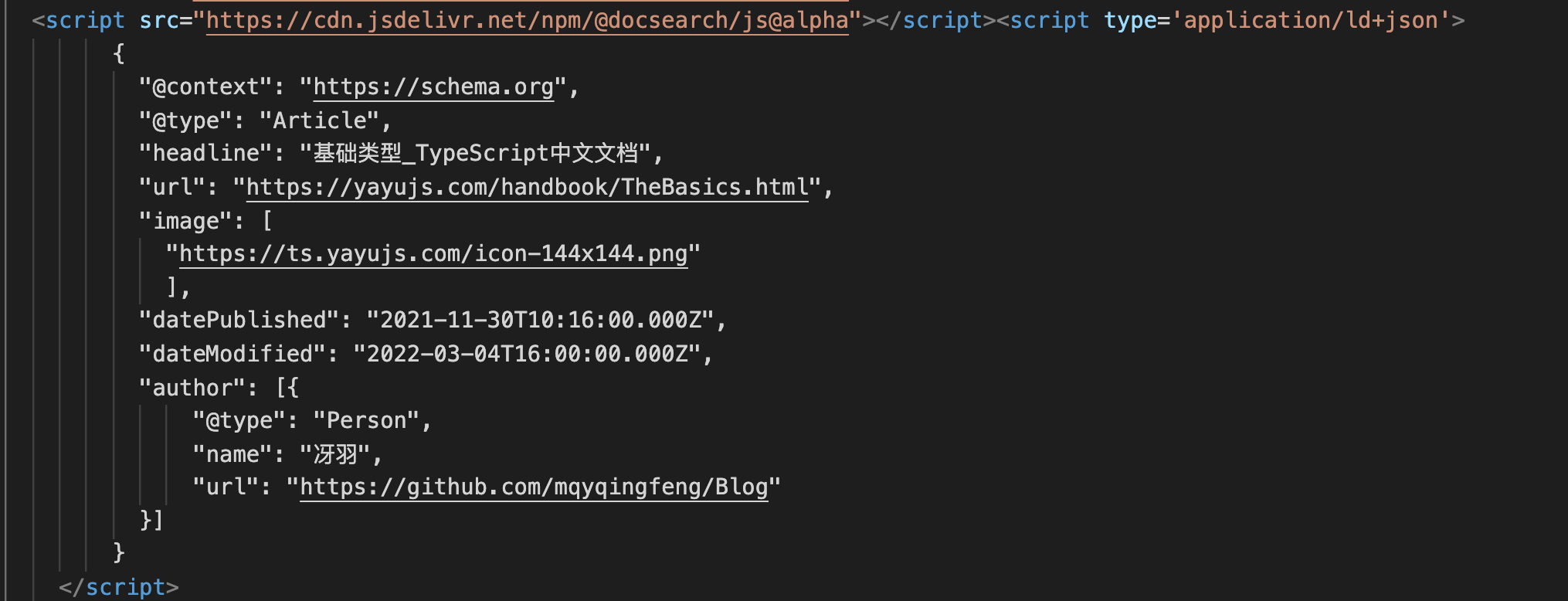JSON-LD
如果我们打开掘金任意一篇文章,比如这篇《VuePress 博客优化之增加 Vssue 评论功能》,查看 DOM 元素,我们可以在 head 中找到这样一段 script 标签:
在思否等其他平台也是可以看到的:
那这个 type 为 application/ld+json 的 script,到底是什么意思呢? 又是什么作用呢?
这就是我们今天要介绍的 JSON-LD,英文全程:JavaScript Object Notation for Linked Data,官方地址:https://json-ld.org/,简单的来说,就是用来描述网页的类型和内容,方便搜索引擎做展现。
比如如果我们在 Google 搜索 「Chocolate in a mug」,我们会看到这样的搜索结果:
我们打开页面,就可以看到搜索展示的内容对应了 application/ld+json 中的内容:
添加 JSON-LD
如果我们也要实现这样的效果,方便搜索引擎展现,该怎么做呢?
在页面加入结构化数据的方法很简单,只用在页面添加这样一段脚本就可以了:
<script type="application/ld+json">// ...</script>
具体里面的内容需要参考比如 Google 搜索中心提供的《结构化数据常规指南》,因为我写的是具体的文章,所以参考 Article 章节后,我决定写入以下这些属性:
<script type="application/ld+json">{"@context": "https://schema.org","@type": "Article","headline": "这里填写标题","image": ["https://ts.yayujs.com/icon-144x144.png"],"datePublished": "2021-11-10T22:06:06.000Z","dateModified": "2022-03-04T16:00:00.000Z","author": [{"@type": "Person","name": "冴羽","url": "https://github.com/mqyqingfeng/Blog"}]}</script>
VuePress 实现
经过搜索,我并没有发现现成的插件,由于每个页面的标题、发布时间、更新时间都不同,那成吧,那就自己写个本地插件实现吧。
其实要实现的内容很简单,就是在编译的时候在 head 中写入一个 script 脚本,脚本的内容根据页面的属性而定,但毕竟我用的是 vuepress 1.x,实现方式受制于工具,完全看工具提供了什么 API 来实现,我们直接看最终的实现方式:
vuepress-plugin-jsonld
在 .vuepress 目录下建立 vuepress-plugin-jsonld 文件夹,然后执行 npm init ,创建 package.json
创建 index.js,代码写入:
const { path } = require('@vuepress/shared-utils')module.exports = options => ({name: 'vuepress-plugin-jsonld',enhanceAppFiles () {return [path.resolve(__dirname, 'enhanceAppFile.js')]},globalUIComponents: ['JSONLD']})
创建 enhanceAppFile.js,代码写入:
import JSONLD from './JSONLD.vue'export default ({ Vue, options }) => {Vue.component('JSONLD', JSONLD)}
创建 JSONLD.vue,代码写入:
<template></template><script>export default {created() {if (typeof this.$ssrContext !== "undefined") {this.$ssrContext.userHeadTags +=`<script type='application/ld+json'>{"@context": "https://schema.org","@type": "Article","headline": "${this.$page.title}","url": "${'https://yayujs.com' + this.$page.path}","image": ["https://ts.yayujs.com/icon-144x144.png"],"datePublished": "${this.$page.frontmatter.date && (new Date(this.$page.frontmatter.date)).toISOString()}","dateModified": "${this.$page.lastUpdated && (new Date(this.$page.lastUpdated)).toISOString()}","author": [{"@type": "Person","name": "冴羽","url": "https://github.com/mqyqingfeng/Blog"}]}<\/script>`;}}};</script>
这里之所以能够给所有的页面都注入脚本内容,是因为借助了 globalUIComponents:
你可能想注入某些全局的 UI,并固定在页面中的某处,如 back-to-top, popup。在 VuePress 中,一个全局 UI 就是一个 Vue 组件。
config.js
接下来我们修改 config.js:
module.exports = {title: 'title',description: 'description',plugins: [require('./vuepress-plugin-jsonld')]}
注意我们在本地运行的时候并不能看到,我们可以关闭 deploy.sh 推送到远程的命令,然后本地编译一下,查一下输出的 HTML:
验证
发布到线上后,我们可以在 Google 提供的富媒体搜索测试中进行验证,打开网址,输入页面地址,就可以看到抓取的结构化数据
如果有错误,这里也会展示警告。

